Beneficial bios, or good bugs, are an extremely important part of our greenhouse operation – they are used by our team of Growers and Bio Scouts as a part of our Integrated Pest Management (IPM) strategy!
IPM is a broad-based strategy that utilizes all available techniques in an organized program to suppress pest populations in environmentally sustainable ways.
As part of our IPM strategy, we introduce good bugs into our crops to keep our plants healthy and prevent bad bugs from damaging them. We currently use 19 different species of good bugs in our greenhouses for pest management, and we also use Bumble Bees for pollination purposes.
It’s important to remember that every bug we use for managing pests and maintaining plant health is unique – they each fight different bad bug species, require different application processes, and look and act differently than one another. Each bug we use serves a special purpose.
Our Growers and Bio Scouts know these bugs like the back of their hand – and we want you to get to know them, too! Check out 5 of our favorite good bug species.
Our Tiniest Team Members
Cucumeris
The Cucumeris is a good bug we introduce to our crops preventatively after planting, as well as for spot treatment throughout the regular season. Cucumeris bugs are usually a light brown or tan color, but they are incredibly small – it takes a lot of knowledge of the bug (and good eyesight) to find them on our plants!
When applying this beneficial bio as a preventative treatment, we use paper sachets that are hung directly on the stalks of our plants. In every row, we typically hang 1 sachet on every third plant. Each sachet contains approximately 250 live Cucumeris bugs, and over the course of about 2 weeks, all 250 bugs found in the sachet leave it as they eat up the food supply inside and search for something new to eat.
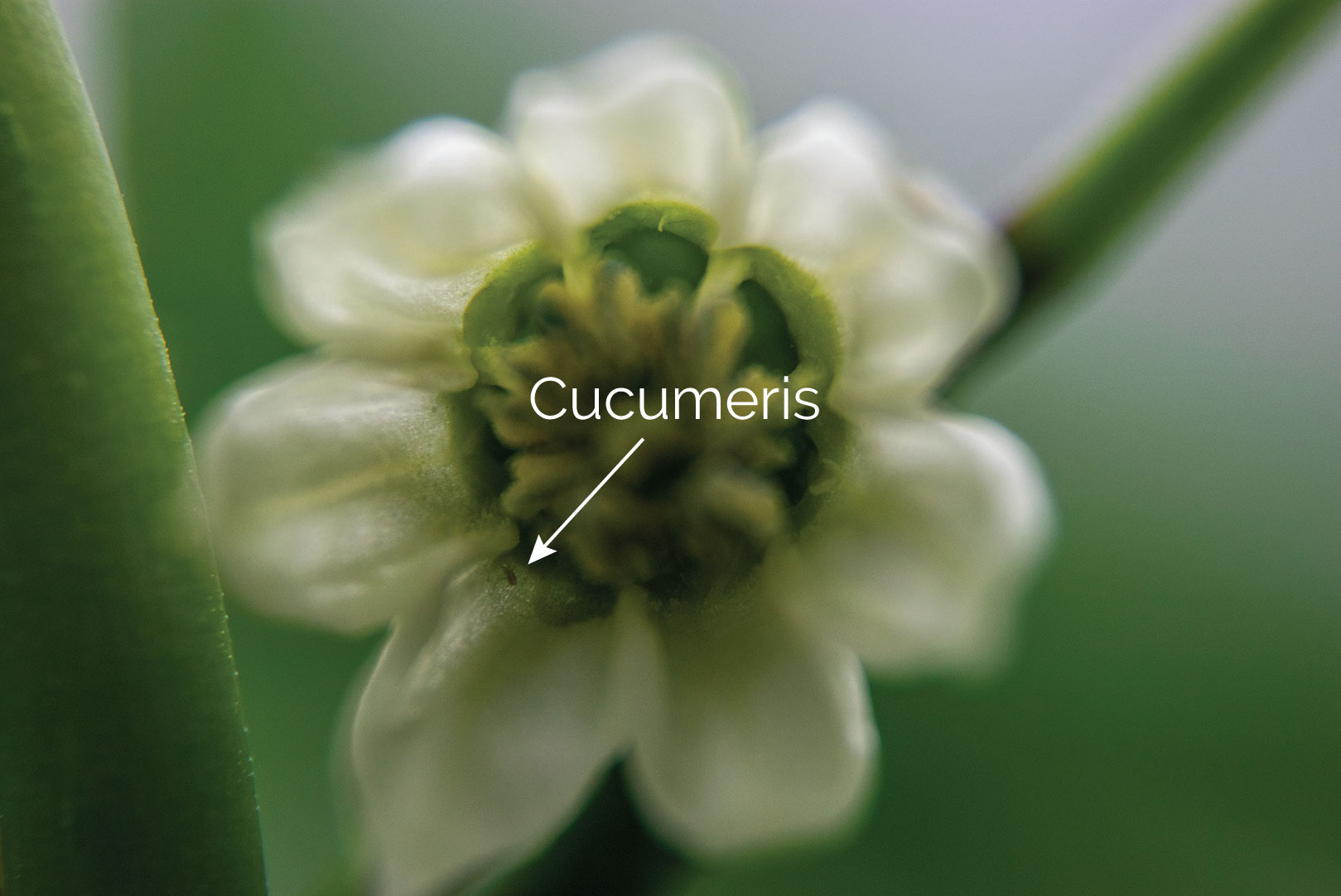
As Cucumeris bugs crawl along the plants in their row, they are searching for food – and the food we want them to eat is Thrips and Spider Mites! These are two destructive insect species that target Tomato, Pepper, and Cucumber plants.
Fun Fact: Like many of our good bugs, the Cucumeris does not fly – but it can travel down an entire greenhouse row by crawling (and for a microscopic bug, that is an impressive feat)!
Lacewing
The Lacewing is one of the few beneficial bios in our greenhouses that can fly! This bug looks similar to a small moth and has a light green body that helps it blend in with the foliage of our plants. Lacewing are applied in our greenhouses to fight Aphids, a common bad bug found in greenhouse crops.
Unlike the Cucumeris, we apply Lacewing bugs once at the beginning of the regular season. When we apply this beneficial bio, we get 1 tube for every 2.5 acres of greenhouse, and each tube is filled with anywhere from 10,000 to 20,000 Lacewing bugs! Our Bio Scouts simply poke a hole in the top of the tube and release the adult bugs throughout the entire greenhouse.
Inside each tube, there are also Lacewing larvae, or unhatched eggs, that will hatch throughout the season and release themselves into the greenhouse. We place the tubes with the larvae strategically throughout the greenhouse so that, when the eggs hatch, the new Lacewing bugs can easily apply themselves to our crops. Lacewing bugs also reproduce while in the greenhouse environment, which is why we only apply them to our crops once at the beginning of the season.
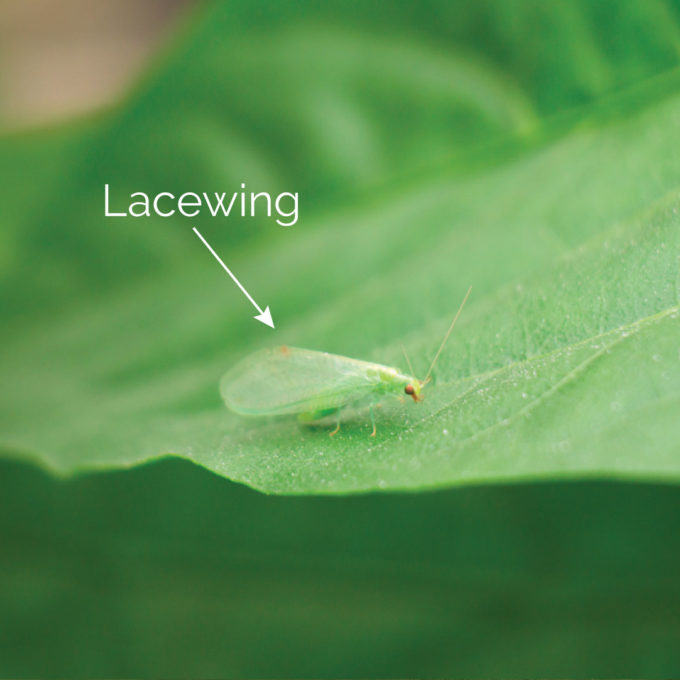
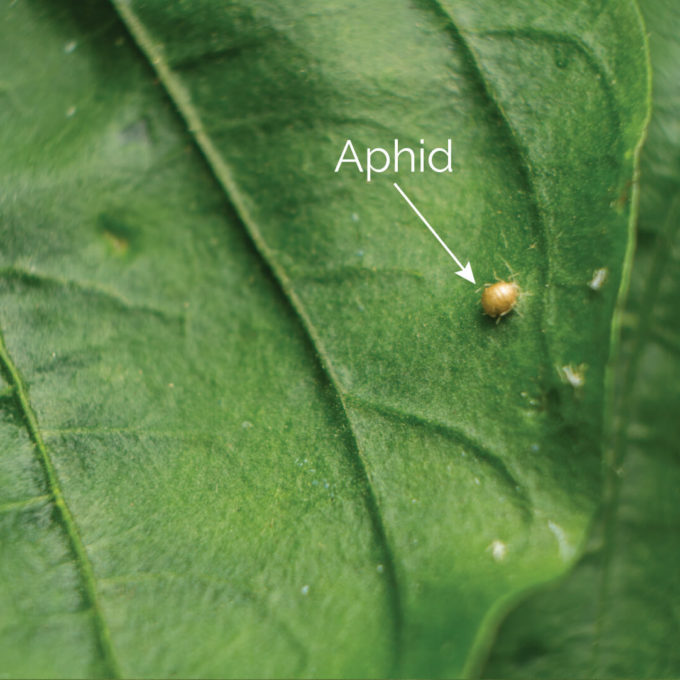
Degenerans
This microscopic bug is one of our favorites – it is incredibly tiny, and it looks like a little black ball rolling around on a plant’s leaves. The Degeneran bug is applied preventatively after planting season to battle Thrips and Spider Mites.
To apply this bug, our Bio Scouts break off a leaf, fold it into a taco shape, sprinkle the Degenerans out of a bottle onto the folded leaf, and put the leaf back on the plant so the bugs can easily crawl onto the crop. Each bottle of Degenerans contains about 250 bugs.
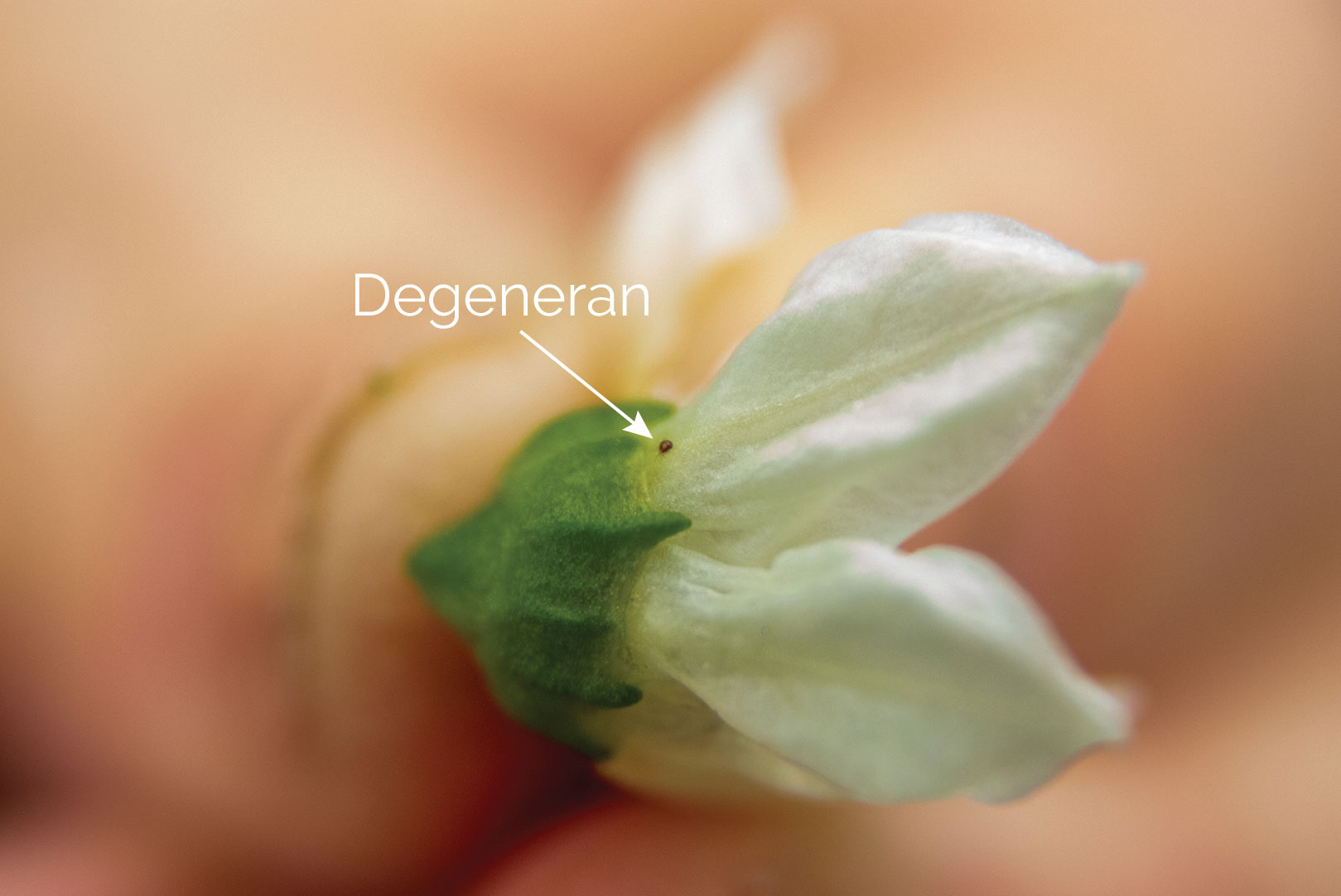
Degenerans typically take longer to establish in the greenhouse environment, but throughout the season, they reproduce at an incredible rate – Growers and Bio Scouts will turn over a plant’s leaf and find hundreds of Degenerans underneath! Since it reproduces so quickly, our team only needs to apply this bug to our crops at the beginning of the season as a preventative measure.
Fun Fact: When our Bio Scout team finds a certain type of bad bug or disease, they use color-coded ribbons to signal what they found and where. For example, if a Scout finds Spider Mite, they tie an orange ribbon at the end of the row where they found it, as well as on the string that is attached to the affected plant. With this system, our team can easily apply the proper beneficial bios wherever bad bugs have been discovered.
Persimilis
Persimilis is a beneficial bio that we use in our greenhouses to attack Spider Mites. Our Scouts apply this tiny orange bug throughout the season as issues with Spider Mite arise – this bug is not applied preventatively unless a Grower decides it is necessary.
The Persimilis bug is unique because it doesn’t have eyes – it relies on its other senses to help it move around our plants and find bad bugs. When plants are threatened by a bad bug, they release stress signals, especially through their leaves. This reaction to threats allows Persimilus bugs to quickly find the bad bugs attempting to harm our plants – they use their heightened senses to interpret a plant’s stress signals and attack the bad bugs!
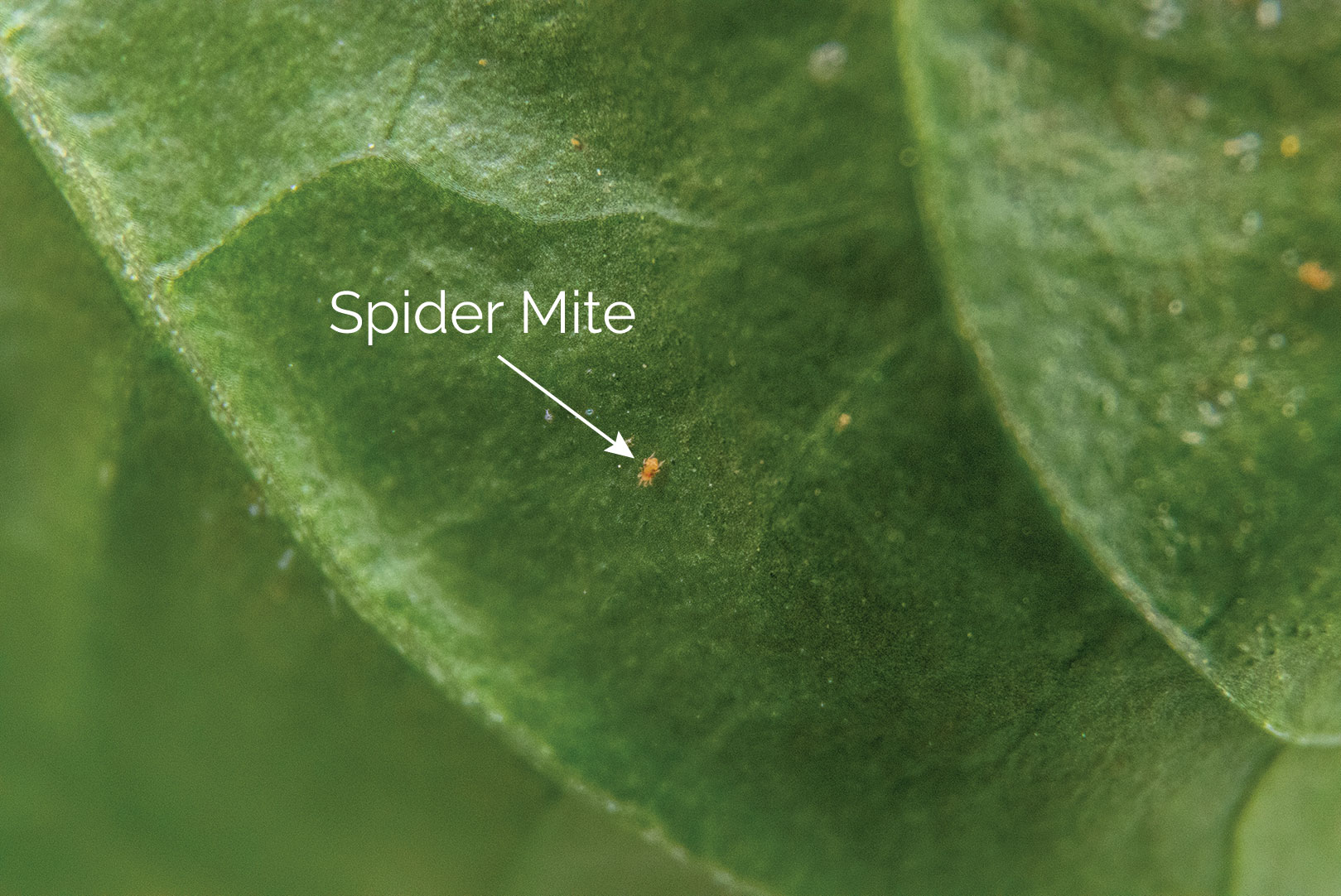
Bumble Bees
Unlike the other good bugs we have discussed here, the Bumble Bee does not attack bad bugs – its sole purpose in our greenhouses is to pollinate! We use bombus impatiens, a Bumble Bee specie native to North America, to pollinate our Tomato crops.
In a greenhouse, there is no wind (which spreads pollen naturally), so we need to introduce a pollinator to the greenhouse environment to pollinate our Tomato flowers. Without a pollinator like Bumble Bees flying around our greenhouses, our Tomato plants would never turn from flowers to fruit!
To introduce our Bumble Bees to the greenhouse, we place Bumble Bee hives on the ground throughout the greenhouse rows – this is because, in nature, Bumble Bees will often establish their hives near to the ground. Each hive contains 100-150 Bumble Bees, including a Queen Bee; she is about 3 times as large as all the other Bees.
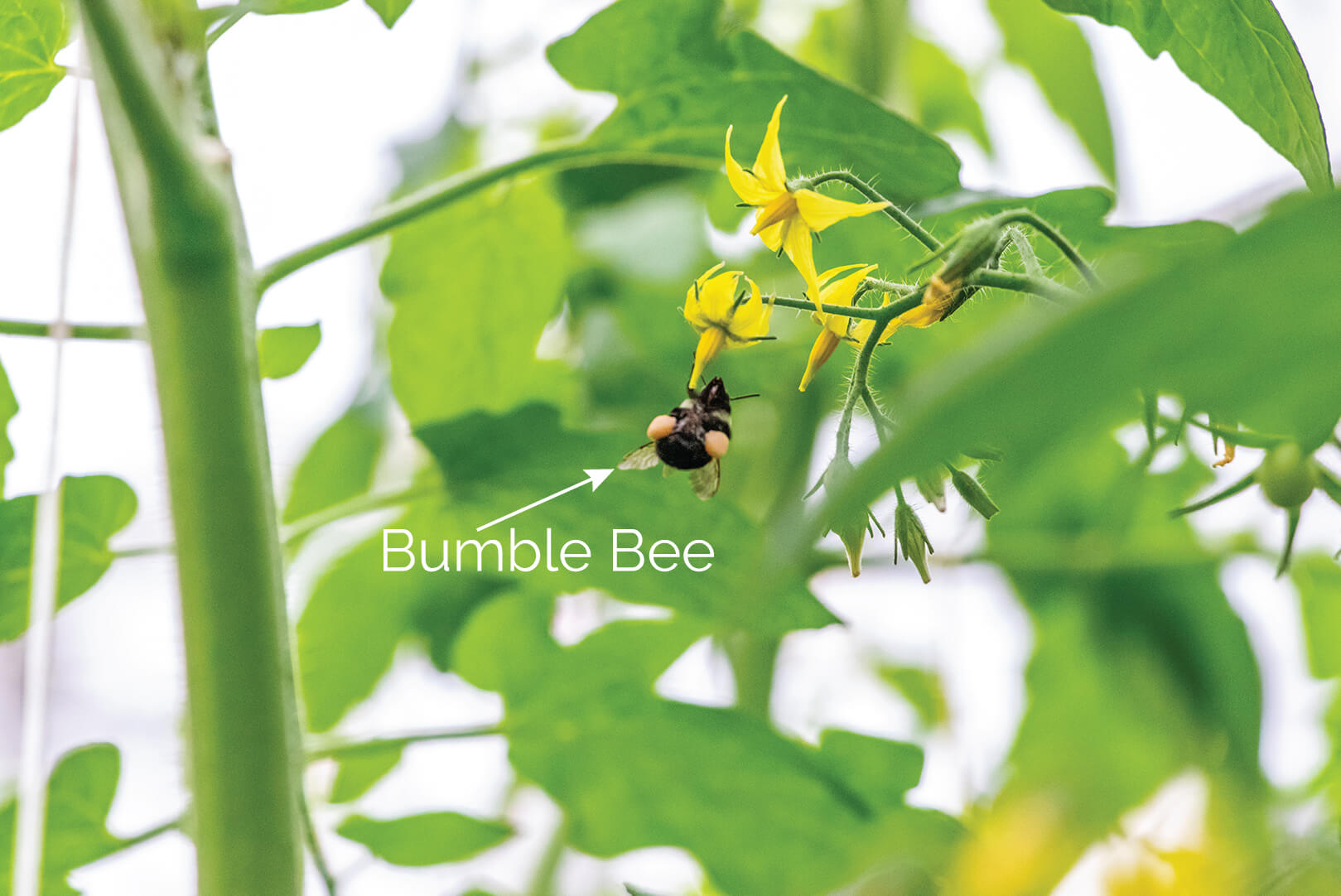
As the Bumble Bees leave their hive in search of food, their fuzzy bodies and legs pick up pollen from the flowers where they collect nectar and pollen to eat. Every time they go to a new flower, they drop some of the pollen they picked up along the way – this is how they naturally spread the pollen that will help turn our Tomato flowers into fruit!
Fun Fact: If there are no bad bugs around for our good bugs to eat, many of the good bug species that we use in our greenhouses will survive off pollen from our plants!
We Love (Good) Bugs!
Our team knows how important good bugs are in a greenhouse – with hundreds of thousands of plants to care for, we need millions of good bugs to help keep our plants healthy and protect them from harmful pests.
We’ve only listed 5 good bug species that we regularly use in our greenhouses, but if you want to learn more about the other good bugs we love, visit our Bug Brigade page!



